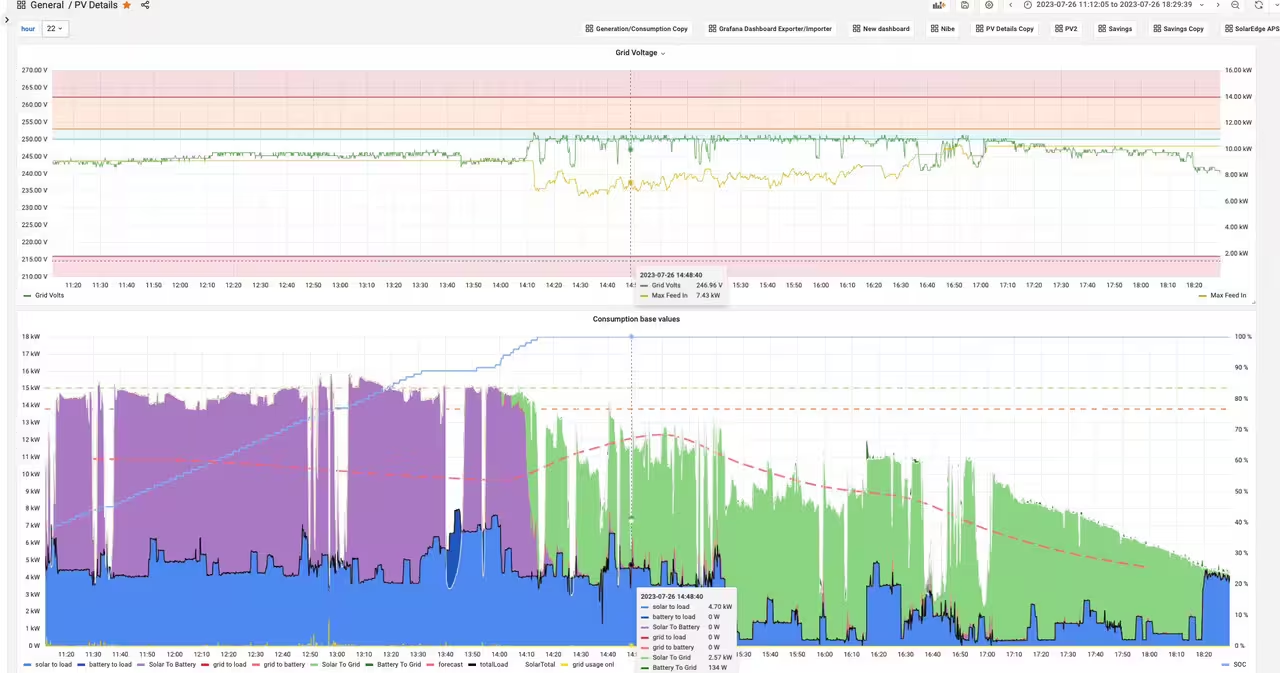Out of interest, is there a rule of thumb for the "most efficient" way to export related to voltage, ie is it more efficient to test the high voltage limits, or does it not really matter for residential export? I imagine that system safety ie not frying any equipment is the more important consideration.Andy wrote: ↑Fri Mar 29, 2024 6:43 pm I am lucky to have a 13kW export limit, in practice I don't get to use it. On a blowy late spring sunny day exporting 13kW will take me well over 260V. I have had a few things suspiciously die around the time I did the tests and I didn't let the voltage climb much above 256V. So I limit my voltage to 250V whilst exporting though might sneak it up a bit this year. The lure of more export money is a strong motivator.
It's not worth tapping us down much more as we have the opposite problem when I am drawing a lot of current in the winter (80A) the voltage drops quite a bit reaching around 220V at the Quattro and then 217-218 at the CU.
Context for asking: I've never seen a grid voltage higher than 247V whilst force exporting with some solar PV production, but usually it floats between 238V and 243V
